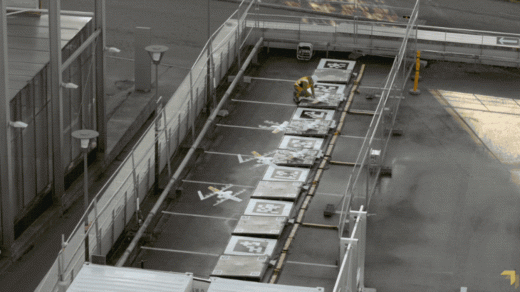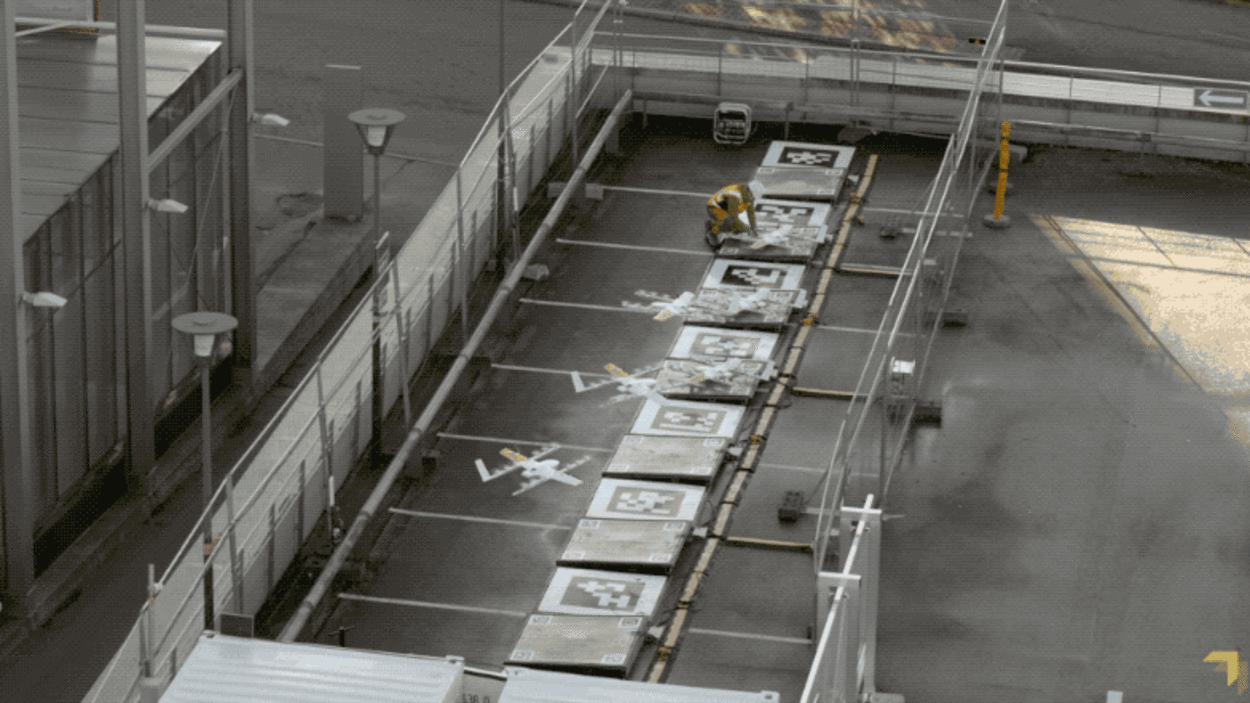Wing launches new flexible drone logistics network
Drone delivery outfit Wing, a subsidiary of Alphabet, is unveiling its new Wing Delivery System.
By introducing cheap, modular pickup stations and multiple charging hubs, Wing is trying to make its drones less like traditional delivery vehicles and more like workers in a gig network—available everywhere and automatically dispatched.
“People are ready to use the service,” says Adam Woodworth, CEO of Wing. “In the next 12 to 24 months, we’ll start to see these operations go from pilot programs and demonstration into continued business operations, expanding at the rate of other delivery service providers.”
Part of what makes their new adaptive system possible is their new Autoloader, which can be set up in a regular parking spot and makes it easy for anyone to load a package for drone pickup. And once the item is loaded, they can go back to work, without having to be present for the actual pickup.
Right now, they’re only deployed in two cities stateside—Dallas-Fort Worth and Christiansburg, Virginia—with other networks in Australia, Finland, and Ireland. They already have partnerships with major brands like Walgreens and DoorDash
But as the network grows, the system will only become more efficient. As more charging hubs are created, and more drones join the network, the capability to support trips that accomplish more than one delivery grows. A drone wouldn’t have to return home once it finished a trip; it could instead start another trip, and then recharge at a hub closer to that second delivery.
Woodworth says the flexibility of their system is possible because they’ve always prioritized cost efficiency.
“A lot of decisions around the size of the aircraft, the materials it’s made out of, the number of airplanes that we’ve built, the type of infrastructure we have on the ground—all of these things were built from the outset to facilitate economics that are competitive with other forms of delivery,” Woodworth tells Fast Company.
They’ve already completed 300,000 deliveries, most of which were to peoples’ homes, Woodworth says. He’s confident that that number will only grow.
But for those concerned about the safety of drones flying over their communities, Woodworth insists that their system is “built for residential delivery” and can safely cooperate with other drone systems without fears of crashing. In April 2019, they were the first drone delivery service to be certified by the FAA to operate as an airline, and they continue to work with regulators to make sure they’re operating as safely as possible. Though some residents in Brisbane, where Wing has operated a pilot program since 2019, have complained about the noise caused by the drones, despite efforts by Wing to deploy quieter propellers.
Woodworth’s vision is for Wing’s drone system to be just one way to cover that last mile.
“What we see in the future is a holistic ecosystem that has a bunch of different delivery providers: small planes, cars, little automated ground robots, each of those providing the service that they’re most suited to, and providing the best benefits to customers and businesses.”
(18)



